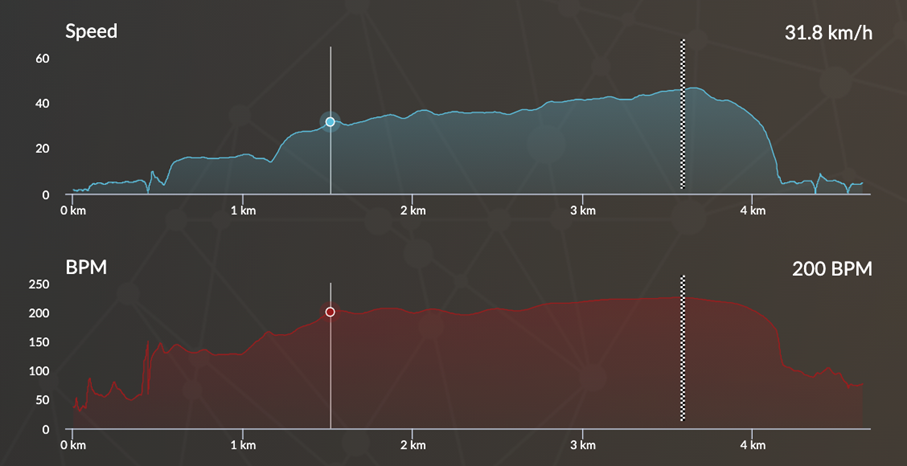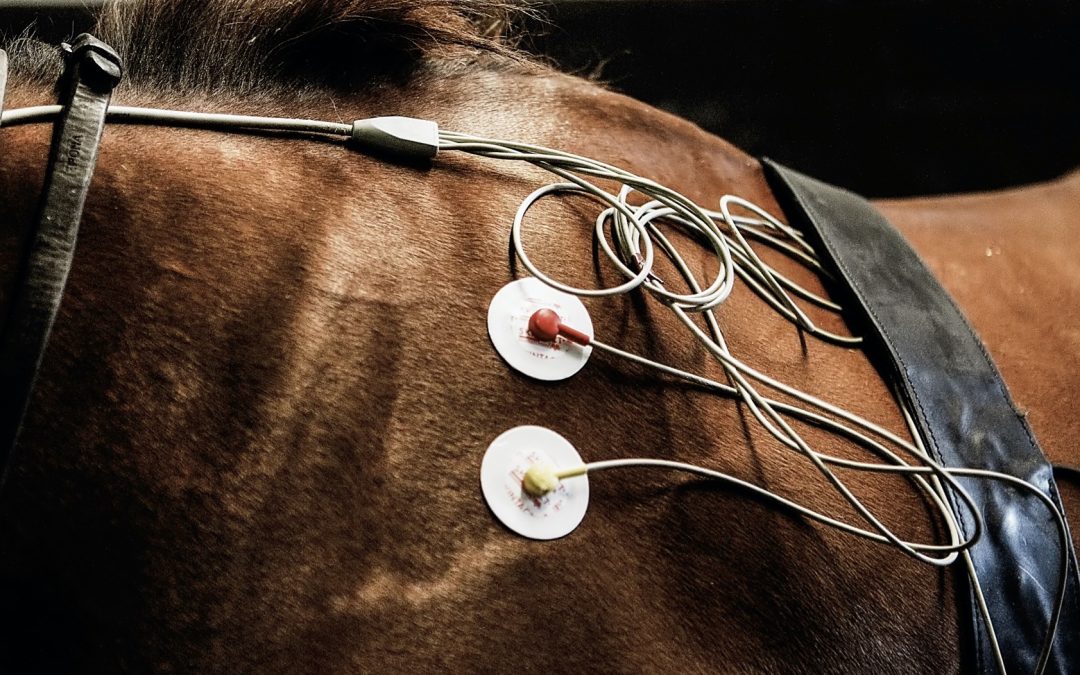Atrial fibrillation is one of the most frequent arrhythmias in racehorses. It is a disordered contraction of the atrial muscle fibers. Atrial fibrillation can lead to a disordered heart rhythm and may precede tachycardia. It results in a significant decrease in performance. When it occurs during a race, it is a safety hazard for the horse and jockey.
There are different types of atrial fibrillation. Persistent atrial fibrillation is characterized by an irregular and steady heart rhythm that cannot recover without medical intervention. Atrial fibrillation is paroxysmal when the sinus rhythm recovers spontaneously within 48 hours after the onset of the fibrillation.
A recent study investigated the consequences of atrial fibrillation post-race episodes. Several goals were at stake. The first one is to assess the impact of atrial fibrillation on the racehorses’ health and career. The second goal is to evaluate whether horses are prone to post-race episodes of atrial fibrillation recurrence. This study appeared in the Journal of Veterinary Internal Medicine in 2021 and was written by Nath L, Elliot A, Weir J, Curl P, Rosanowski S, and Franklin S.
With this article, we aim to present the study and the numerous results that emerged from it.
Goals of the study
The study aimed to investigate the impact of a post-race episode of atrial fibrillation (paroxysmal or persistent) on the longevity of the racehorse’s career. The scientists were also interested in the possible recurrence of a post-race episode of atrial fibrillation (AF).
Method
The study population included 4684 horses from the Hong Kong Jockey Club. The study period was July 31, 2007, to July 31, 2017, and 96 135 race starts occurred during this period. A race start is the number of horses entered in a race. An AF episode is diagnosed by listening for an irregularly irregular heartbeat within 60 minutes of the race.
Post-race veterinary inspection
At the request of the stewards and after the race, veterinarians diagnose potential atrial fibrillation.
The horses are those with surprisingly limited performance during the race. Veterinary inspections are performed within 30 minutes of the race and consist of cardiac and respiratory auscultation, lameness examination and palpation of musculoskeletal structures, and upper airway endoscopy.
Results
The HKJC medical records study identified 280 episodes of atrial fibrillation in 230 horses. The table below shows the study results by medical records. Results are displayed for 100 horses based on the previous episode type and frequency.
| (n horses suffering an AF/ n population) |
Incidence for 100 horses (CI 95%) |
| Total population (230/4 684) | 4,9 (4,3-5,6) |
| Only one episode (185/4 684) | 3,9 (3,4-4,6) |
| Two episodes (40/4 684) | 0,85 (0,6-1,1) |
| Three episodes (5/4 684) | 0,1 (0,0-0,2) |
Nath, L., Elliott, A., Weir, J., Curl, P., Rosanowski, S. and Franklin, S., 2021. Incidence, recurrence, and outcome of postrace atrial fibrillation in Thoroughbred horses. Journal of Veterinary Internal Medicine, 35(2), pp.1111-1120.
The overall incidence of atrial fibrillation in horses entered for racing is 4.9 per 100 starts. This frequency is 3.9 per 100 starts in horses with a previous episode of atrial fibrillation.
Impact on recurrence of atrial fibrillation episodes
In terms of recurrence, 25% of horses with a previous episode of AF without being retired had a new one. Five horses that were not retired after the second episode of AF experienced a new one. Eleven horses continued training after a persistent AF, and of these, 7 experienced a new one.
The table below compares the recurrence of paroxysmal episodes with that of persistent atrial fibrillation. We can also compare recurrence with the number of events previously experienced.
|
Type of previous episodes |
n recurring horses / n horses with a previous episode |
Recurrence per horse |
|
Following any type of episode |
50/199 |
25,1 (19,2-31,8) |
|
One previous episode |
45/184 |
24,5 (18,4-31,3) |
|
Two previous episodes |
5/15 |
33,3 (11,8 – 61,6) |
|
Paroxymal |
42/184 |
22,8 (17,0-29,6) |
|
Persistant |
7/11 |
63,6 (30,8-89,1) |
Atrial fibrillation recurrence in 184 horses that continued training after their first episode.
Nath, L., Elliott, A., Weir, J., Curl, P., Rosanowski, S. and Franklin, S., 2021. Incidence, recurrence, and outcome of postrace atrial fibrillation in Thoroughbred horses. Journal of Veterinary Internal Medicine, 35(2), pp.1111-1120.
The index of atrial fibrillation recurrence was higher in horses with a previous episode of persistent AF. The proportion of horses with recurrence after a former episode of persistent AF (7 of 11; 64%) is higher than for horses with a paroxysmal episode (42 of 184; 23%).
Impact on career longevity of racehorses
In addition, this graph illustrates the impact of episode recurrence (whether 1, 2, or 3) on career length. We can’t highlight any significant harmful effect on horses, having experienced 1 or 2 episodes during their career. For horses having experienced three episodes of AF, the longevity curve stops a little earlier.

Nath, L., Elliott, A., Weir, J., Curl, P., Rosanowski, S. and Franklin, S., 2021. Incidence, recurrence, and outcome of postrace atrial fibrillation in Thoroughbred horses. Journal of Veterinary Internal Medicine, 35(2), pp.1111-1120.
Detecting atrial fibrillation
It is important to note that most of the abnormal variations in the ECGs of diagnosed horses were associated with a very high heart rate. During auscultation, veterinarians can detect variable intensity of sounds and an irregularly irregular heart rate.
Thus, an elevated heart rate could be synonymous with possible deterioration of the sinus rhythm. Sinus rhythm is the correct synchronization of heart contraction in the sequence of the sinus node (hence the name), atria, atrioventricular node, ventricles.
An ECG collected during exercise confirms the diagnosis of atrial fibrillation.

Concrete example
A 3-year-old male monitored daily by EQUIMETRE was diagnosed with atrial fibrillation thanks to the monitoring of his heart rate during exercise.
On this screenshot of the Equimetre analysis platform, we can see that the heart rate is abnormally high. Indeed, the horse reaches a heart rate higher than 200 BPM at the beginning of its exercise.
This data, associated with a disappointing result in race alerted the trainer who shared the electrocardiogram recorded by Equimetre with his veterinarian. The latter confirmed the atrial fibrillation diagnosis.

Limitations of the study
This study has some limitations. First, only horses that underperformed had a veterinary examination. A large part of the sample population was therefore not examined after the race. Furthermore, the analyzed horses reflect the population of the HKJC: they are mainly geldings (224 out of 230 horses, the other 6 being stallions).
Some silent episodes are not clinically detectable and therefore escape this analysis. Silent episodes of paroxysmal AF may frequently occur during training and racing, and the cumulative effect of these episodes may result in a higher AF load and longer AF duration. This is more likely to limit performance and be detected clinically.
Conclusion
Atrial fibrillations are the principal causes of exercise intolerance of cardiovascular origin in horses. Hence, their detection is a challenge for the equine industry to improve horses’ well-being and limit the accident risk on the racetrack. The use of a system for monitoring the horse during exercise allows for the early detection of cardiac anomalies. For example, our EQUIMETRE connected sensor measures heart rate and collects the ECG automatically during exercise. These new technologies are a breakthrough in the field of equine health and well-being.
Keywords: atrial fibrillation in racehorses, cardiac pathologies detection horses, prevention, equine veterinarians, ECG horse
References
Nath, L., Elliott, A., Weir, J., Curl, P., Rosanowski, S. and Franklin, S., 2021. Incidence, recurrence, and outcome of postrace atrial fibrillation in Thoroughbred horses. Journal of Veterinary Internal Medicine, 35(2), pp.1111-1120.
Van Loon, G., Mattys, H., De clercq, D. and Decloedt, A., 2019. Traitement de la fibrillation atriale chez le cheval : la cardioversion électrique transveineuse. Pratique vétérinaire équine, (201).



